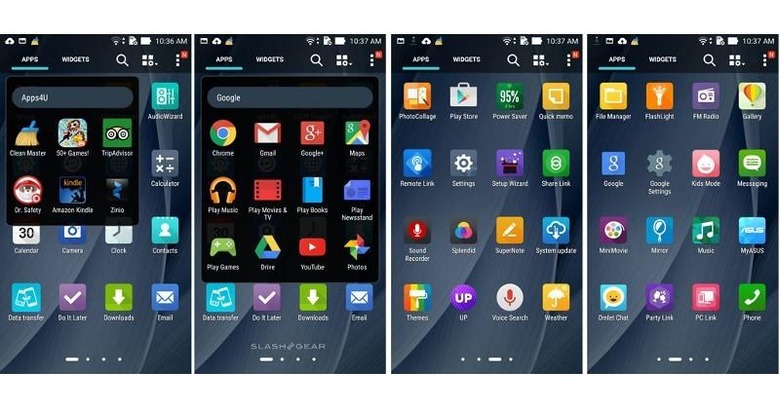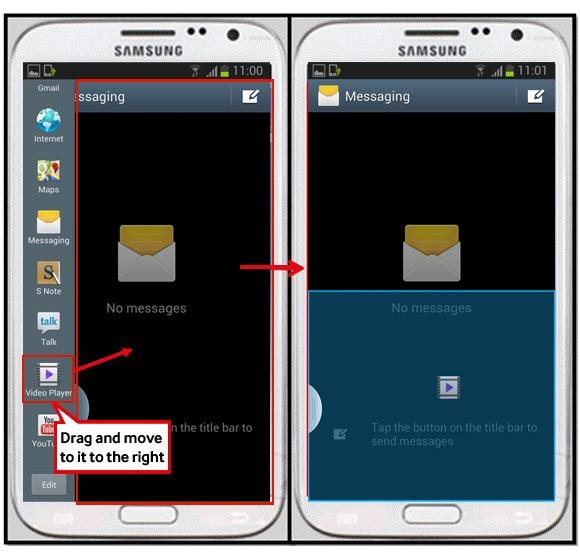Android OEM customizations are never going away, and that's OK
There was some small amount of rejoicing within the Android community when Lenovo revealed that it would be putting its custom "Pure Vibe" skin to rest, starting with the K8 Note that was launched last week. As if in juxtaposition, Xiaomi is about to start the rollout of the latest version of its own custom experience, the MIUI 9. As much as Google and some Android users want to be rid of them, custom OEM modifications to stock Android aren't going anywhere soon. And that's perfectly OK because, like any other dichotomy in Android, it helps the platform grow to some extent.
A past that comes back to haunt
Just like with the fragmentation situation, Google is partly to blame for all these diverging user experiences on Android devices. At the same time, it had very little choice. It had to play nice with smartphone makers if it wanted Android to be on any commercial hardware. And it had to give OEMs some leeway in adapting a still very young mobile platform.
Not that the first iterations of Android were to die for anyway. Even by that time's standards, Android's stock experience was pretty raw, which both necessitated as well as gave room for OEMs to leave their unique mark in the nascent mobile market. Some of those, specifically Samsung's TouchWiz, survived and evolved over time. Others, like HTC's Sense, eventually faded from view.

While the stock Android experience has also matured over the years, it would be hubris to presume it did so in a vacuum. Some of its developments were made in response to trends set by OEMs. Others were specifically done to counter those trends.
That bloated feeling
Majority of the complaints that Android users have against OEM changes is the excess baggage they bring. And it isn't just about the tons of pre-installed apps, like in the case of ASUS' ZenUI, that can sometimes be uninstalled or at least disabled. There's also the tons of services running behind your back, taking up precious resources that could be allocated elsewhere. That's not even considering how such services, like third-party OTA (over the air) firmware updaters, could be used to inject apps without your knowledge, let alone your consent.

Users pay in more than just storage space or CPU cycles. These same customizations eventually cause updates to be delayed, even critical security ones. For every Android update Google pushes out, OEMs have to apply their changes and test them every time. The more changes the OEM has done to the pure Android experience, the longer time it takes to make sure they work on new Android versions. That's why it's no surprise that Samsung takes forever to push out updates, while the likes of BlackBerry or even Sony are able to do so more regularly.
In the end, it results in an overall inconsistent experience for Android users. Those used to Samsung Galaxy phones will feel lost on LG's. Those coming from Xiaomi will scramble for features and controls on Huawei handsets. But more than just different features, the distribution of Android updates and patches is also inconsistent across different OEMs and even across the same OEM. It is a confusing and dizzying circus that iOS users love to laugh at.
Beauty in diversity
OEM customizations aren't going away, and that's not just because these companies have invested so much time and money into developing them. It's because, believe it or not, they sometimes do add value to the user experience and, perhaps more shockingly, influence Android's core over time.
The stock Android experience is fast and clean mostly because it is lean. It's also because it's not exactly complete either. The out of the box experience of a Nexus might appeal to those already familiar to Android, but new users, especially those migrating from other platforms, might find it a bit lacking as a first experience. Even the Google Pixel launched with features that weren't immediately available on stock Android for a while. Stock Android, be it on a Nexus, Pixel, or AOSP, is like a blank canvas you can paint your own experience on. Provided you already knew what or how to paint. In that sense, custom OEM skins aren't just cherries on top. They help soften the blow of a new device and a new experience for users.
And believe it or not, some of these customizations eventually drive changes in Android, even if only indirectly. You will see some resemblance with now stock Android features that were, for years, already enjoyed by Android users from OEMs. Quick toggles, split screen, picture-in-picture, lock screen shortcuts, home screen settings, and torch/flashlight, are just some of those features that came to stock Android only after they've been around on OEM devices. Of course, not all OEM features make it to stock Android, no matter how much Android users cry.

At the same time, the same freedom that allows for custom OEM experiences have also made it possible for new Android experiences to pop up here and there. Samsung was one of the first to deploy Android to tablets at a time when Google didn't even want to acknowledge their existence. The variety of desktop-like experiences, from Jide's Remix OS to Samsung's DeX, would have not been possible if Google exercised an iron hand when it came to user experiences.
Wrap-up
The Android ecosystem is complicated, which can be expected from a platform that espouses openness and freedom. And like in any place where there is freedom, there is also the risk of abuse. That, however, is not always enough to justify taking away that freedom.
The situation with custom OEM skins and features isn't pretty, but it's both unavoidable and, at the same time, ideal. Of course, it could also be better. Google is taking steps in giving Android a more solid base that its partners can build on, but Project Treble, for now, addresses the lower levels of the stack rather than the user interface. Google and its partners will eventually have to find a middle ground there as well, agreeing on a standard Android experience while not stifling the unexpected innovation that sometimes comes from breaking the rules.
